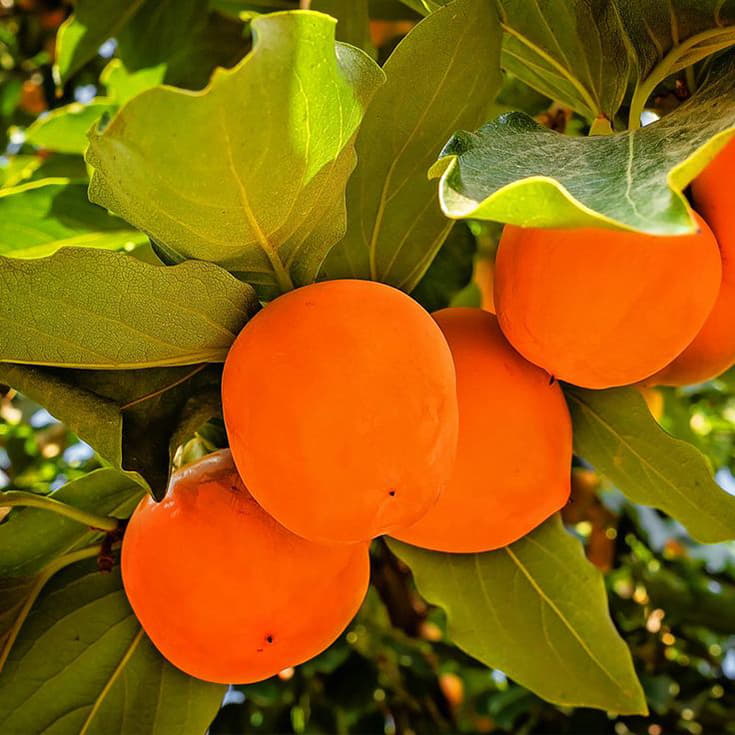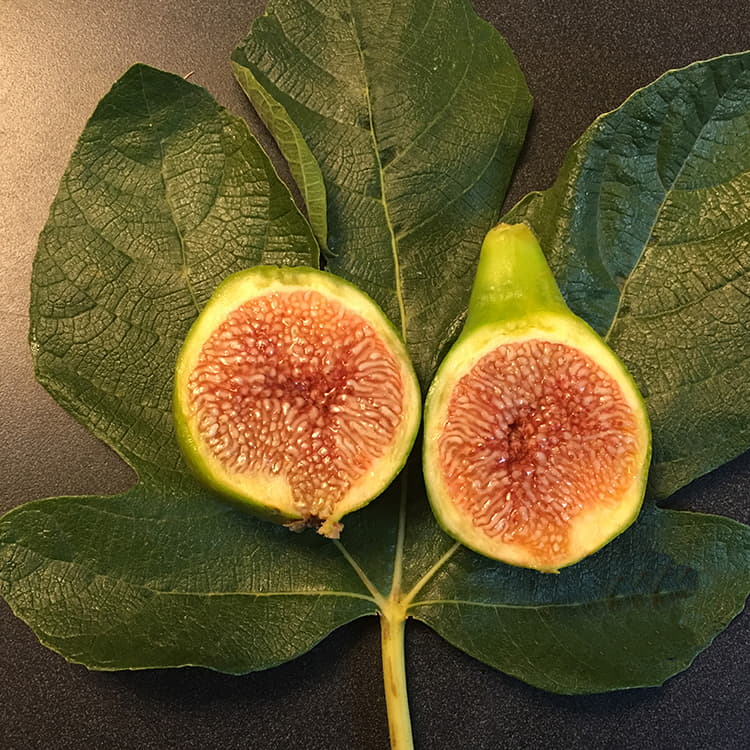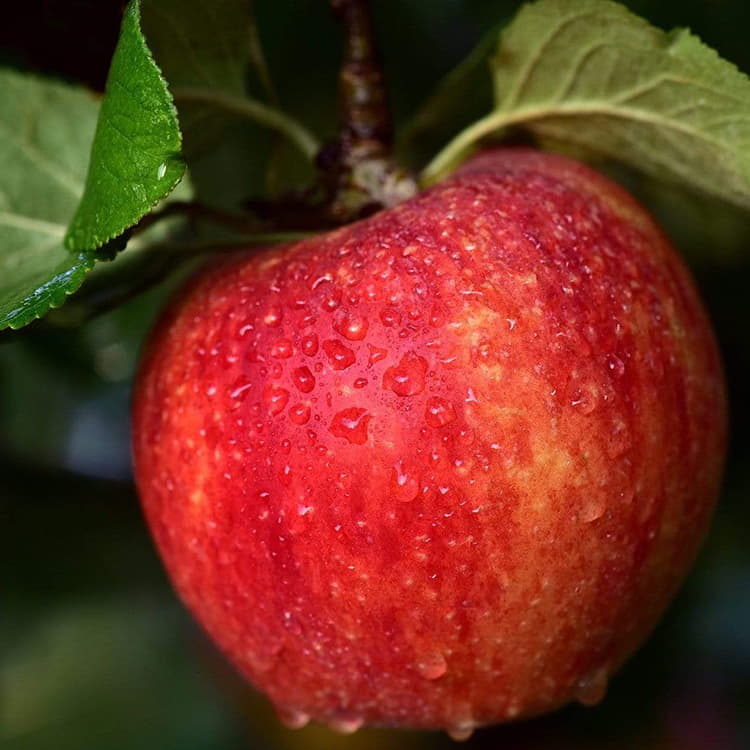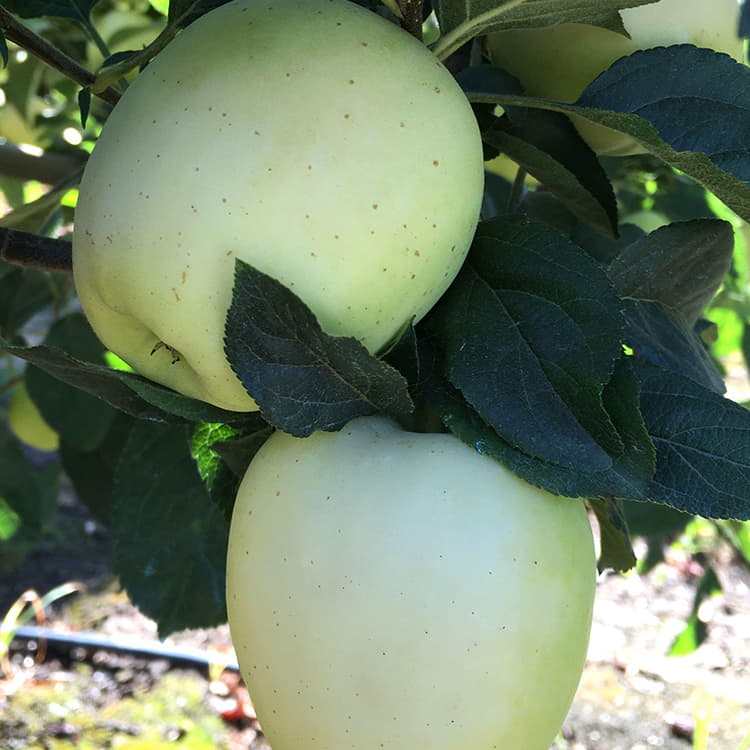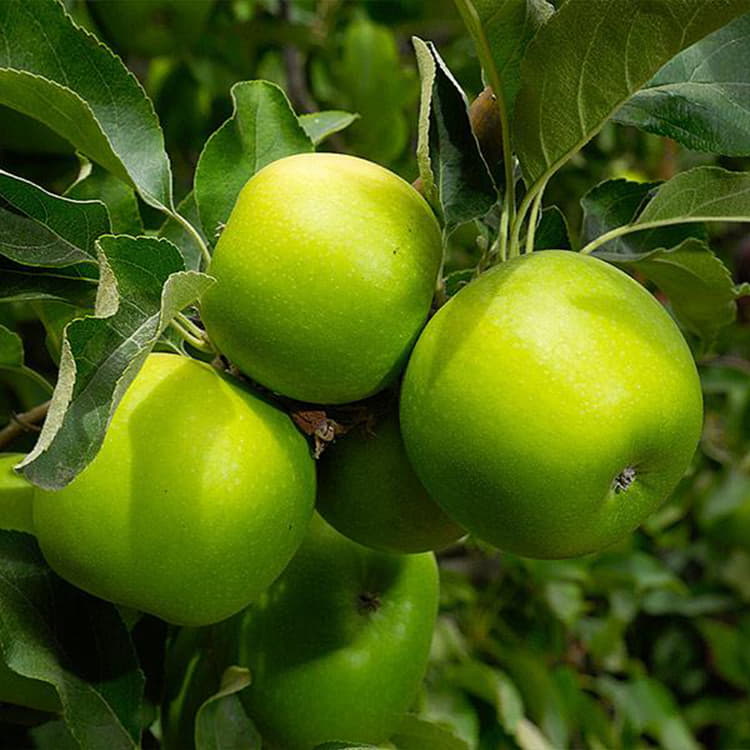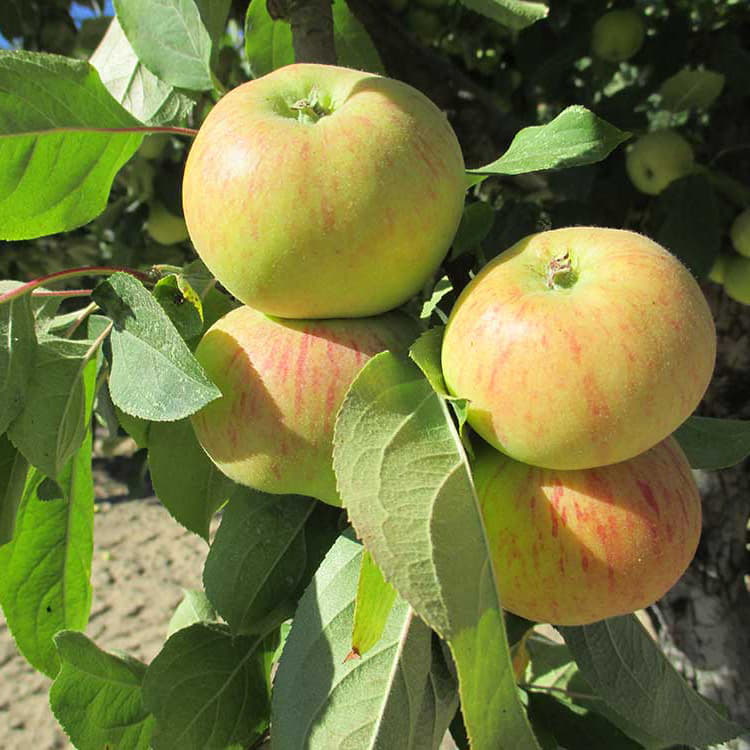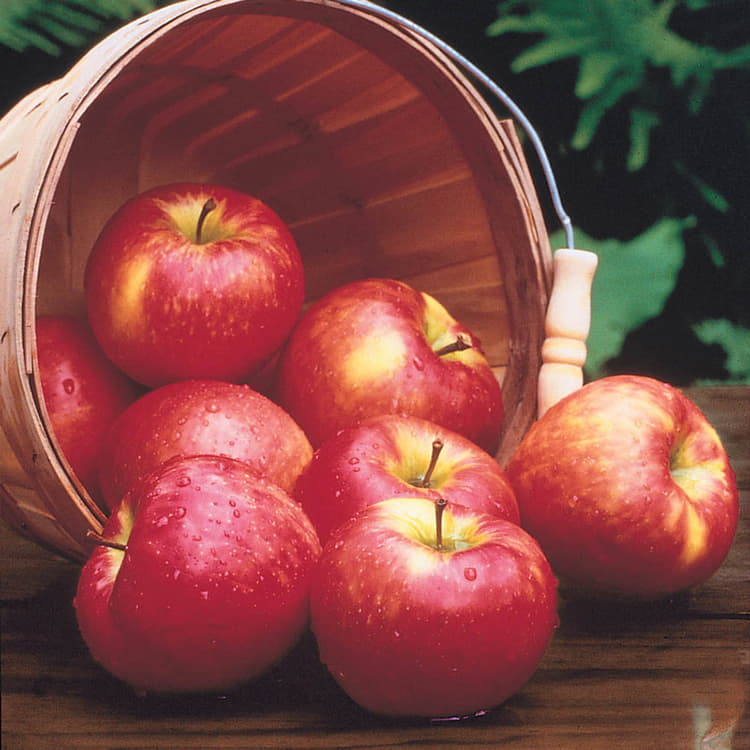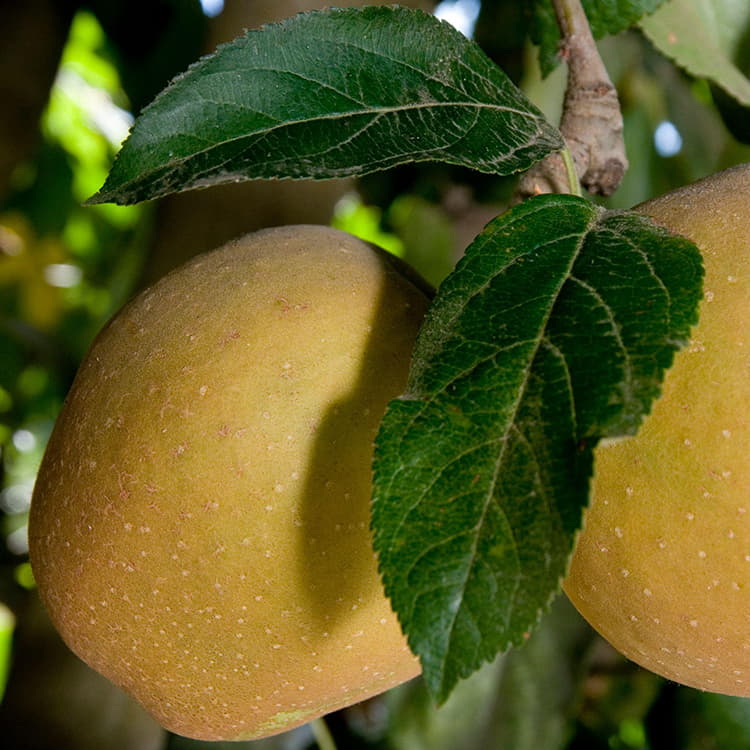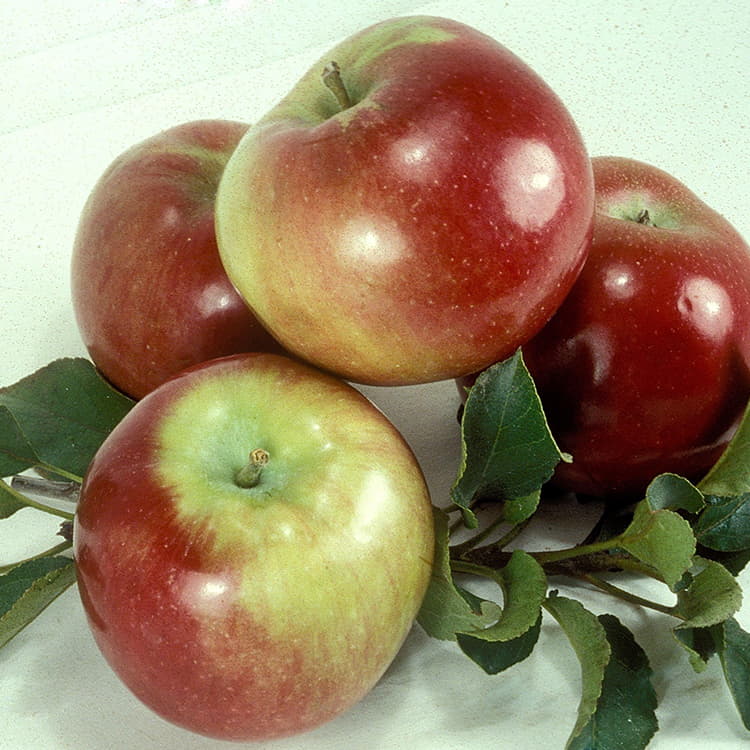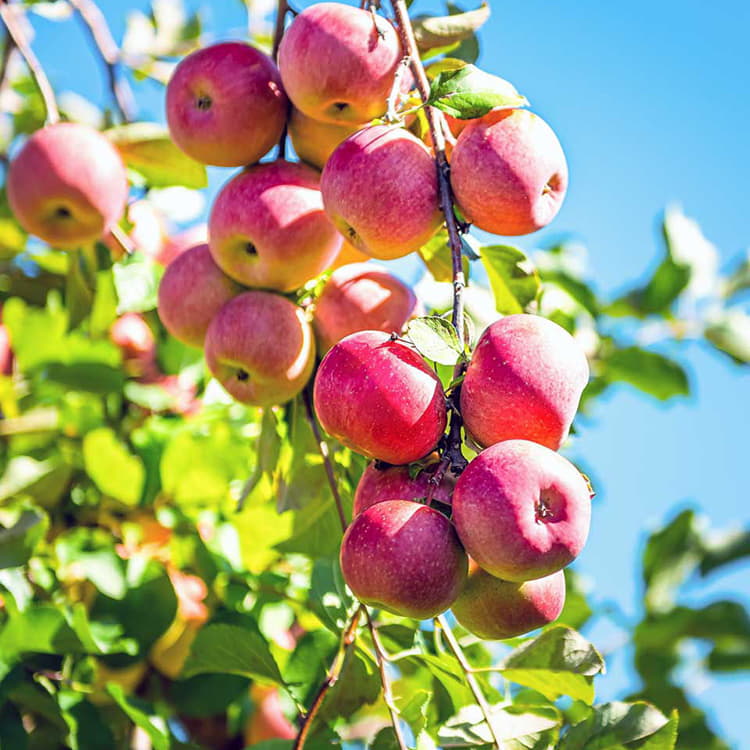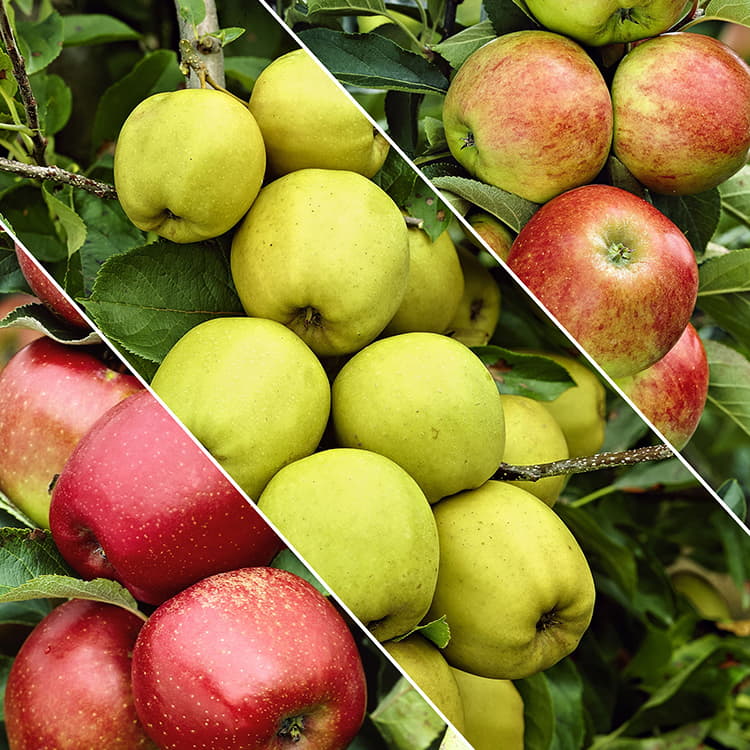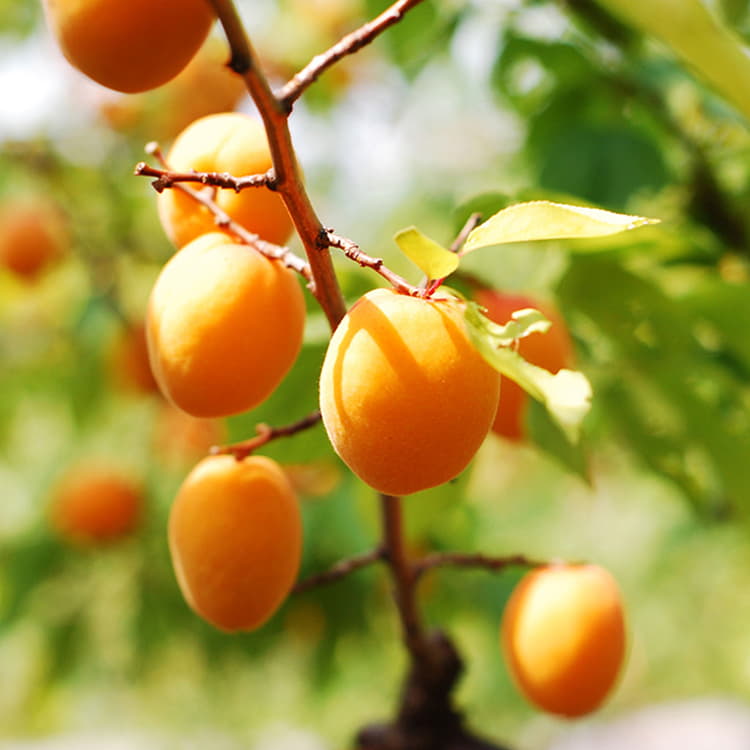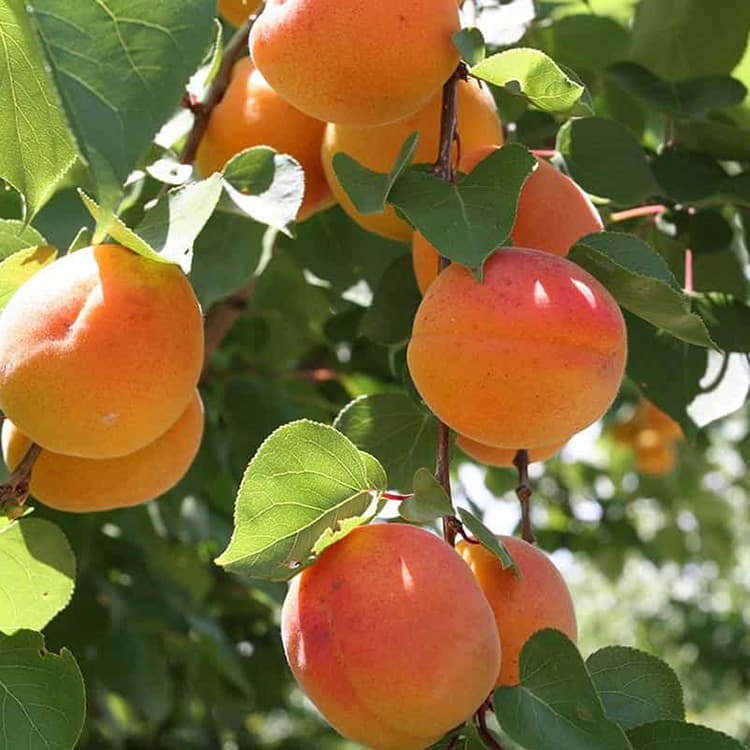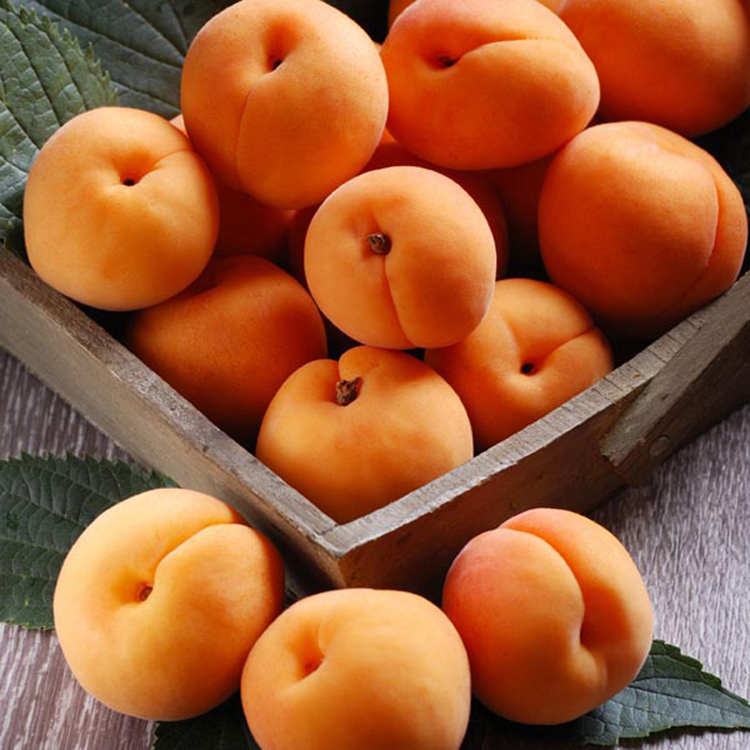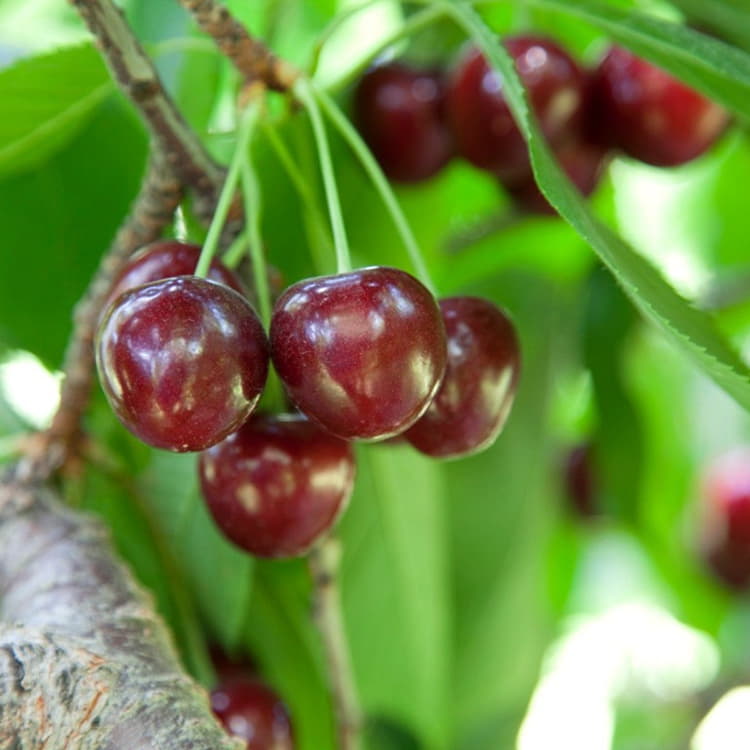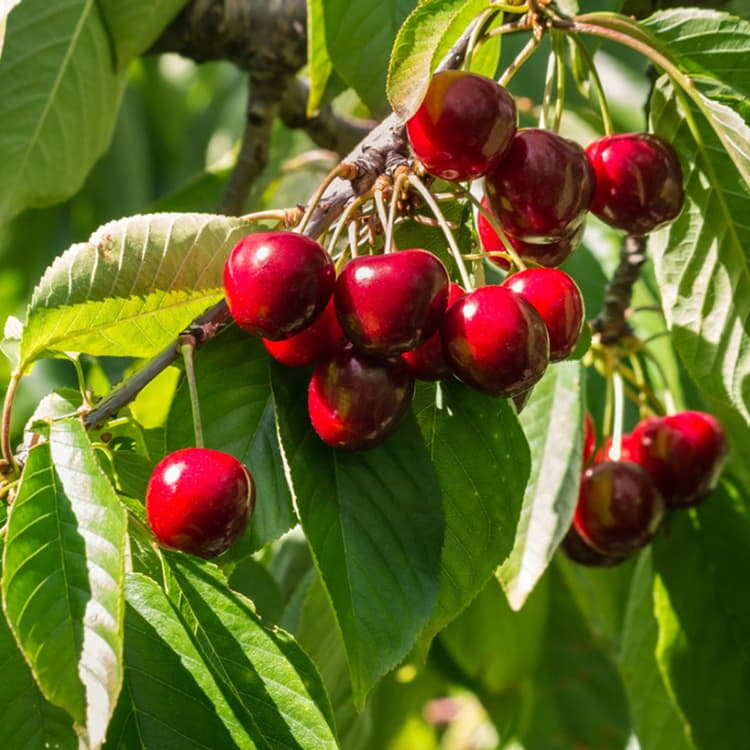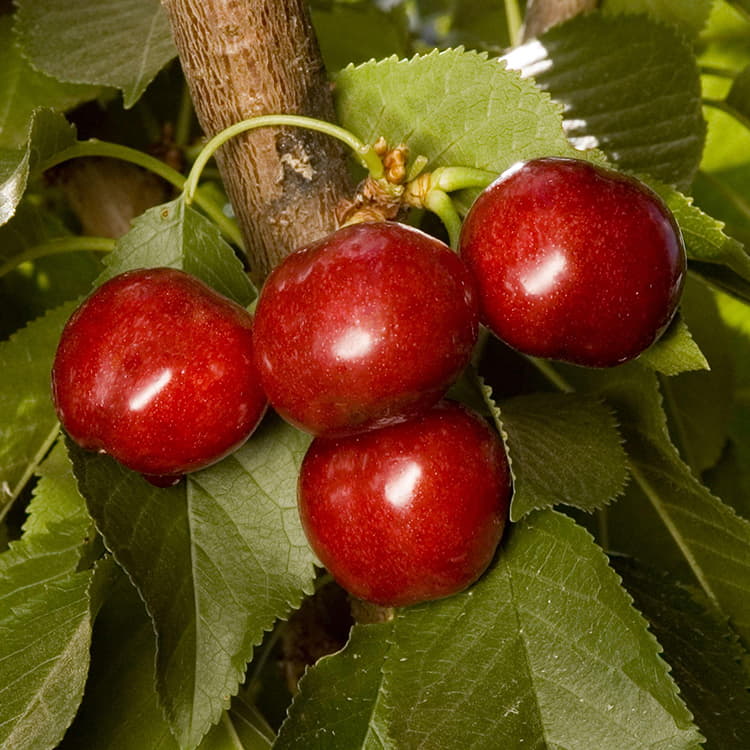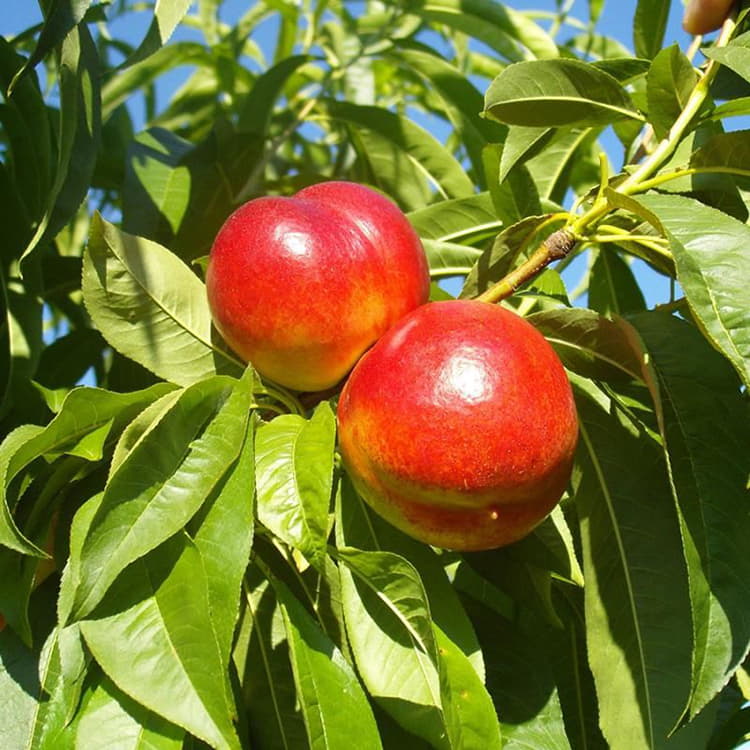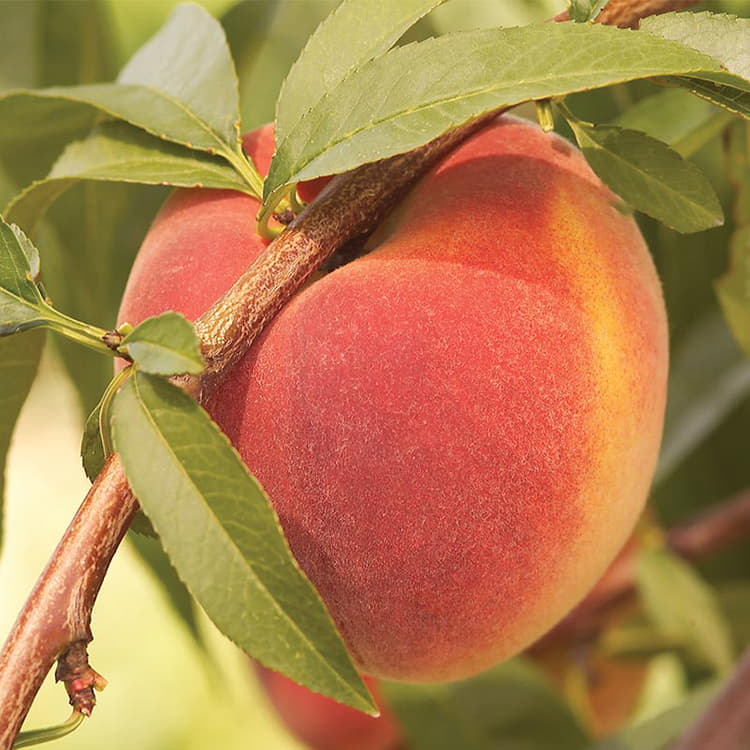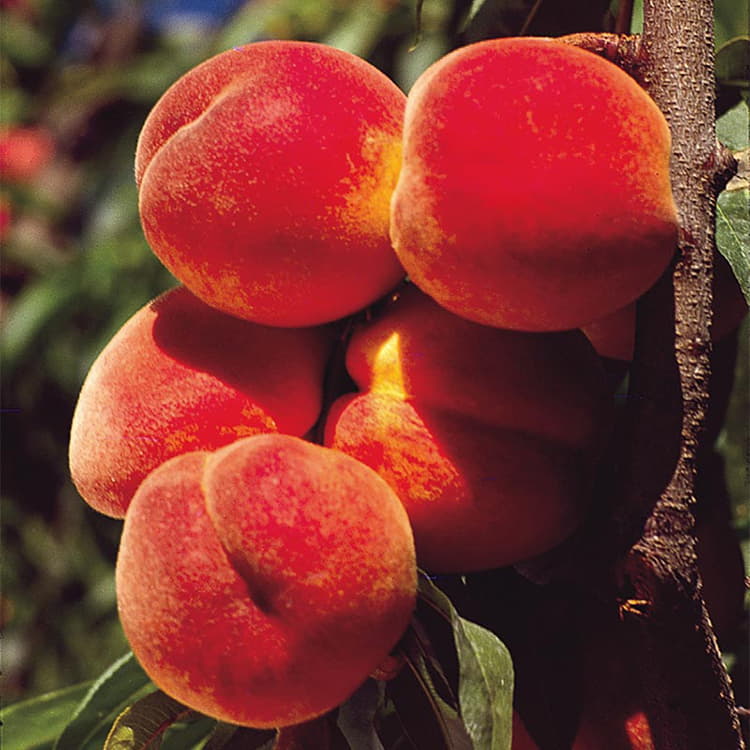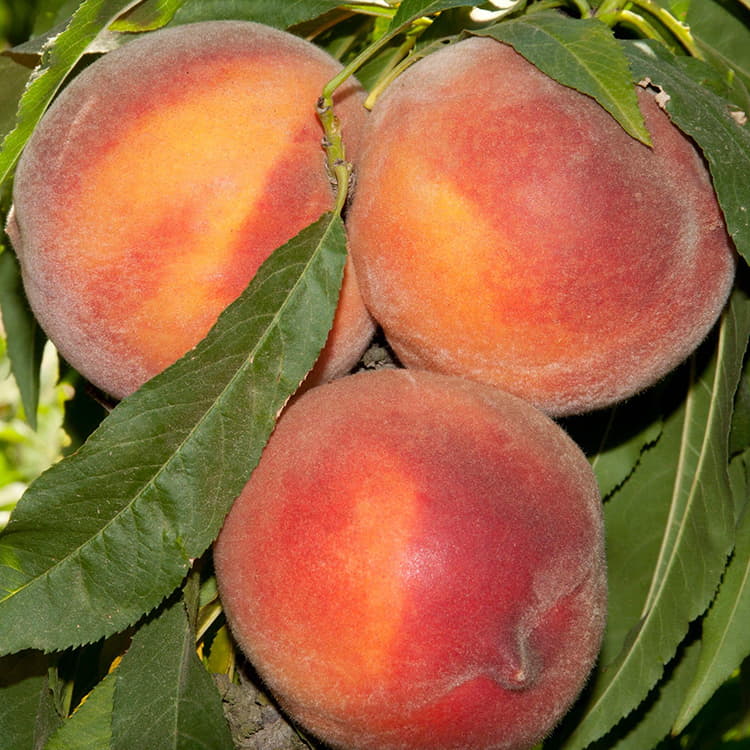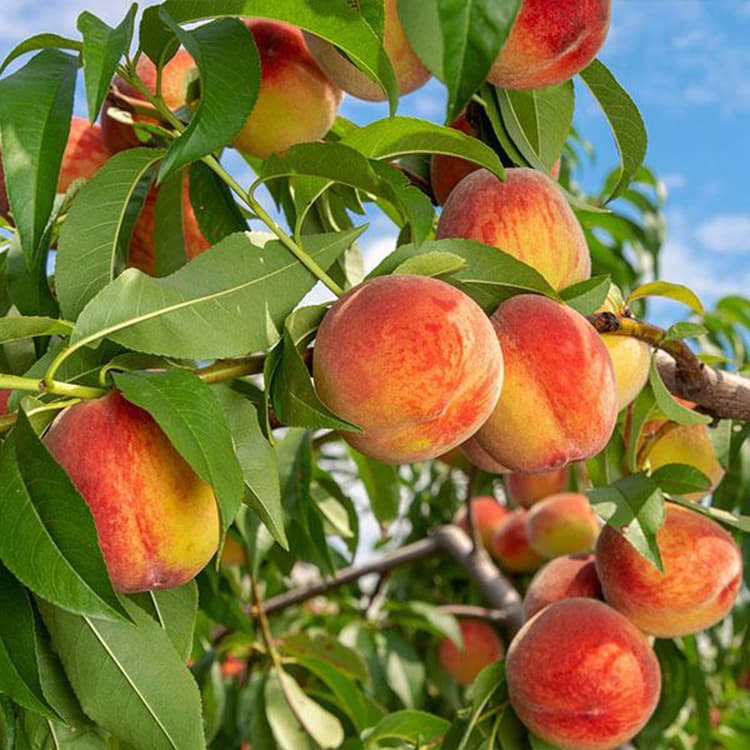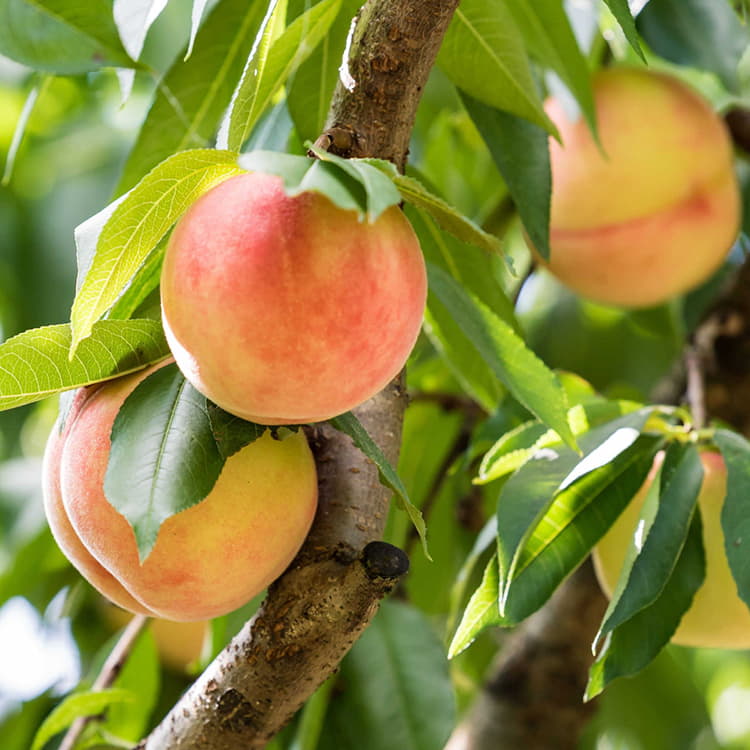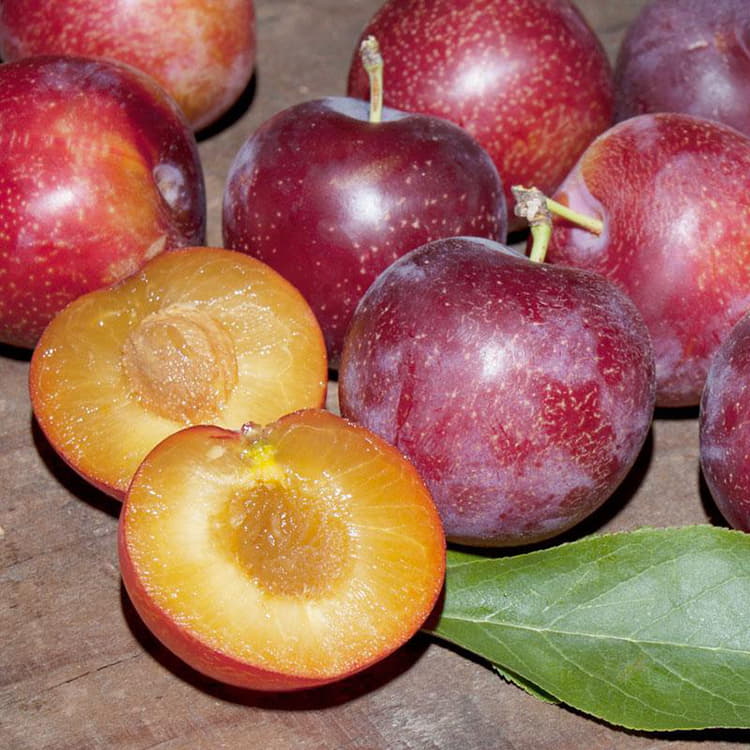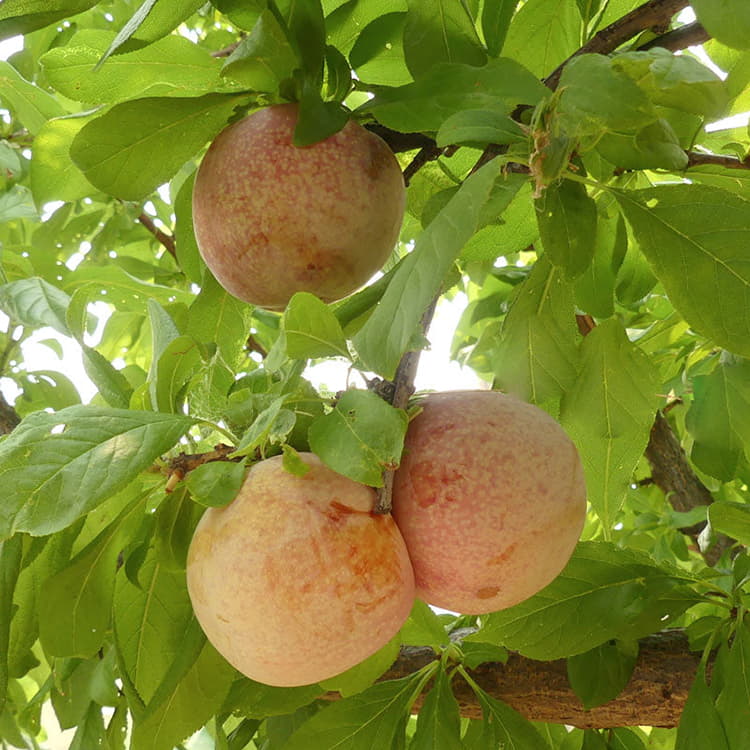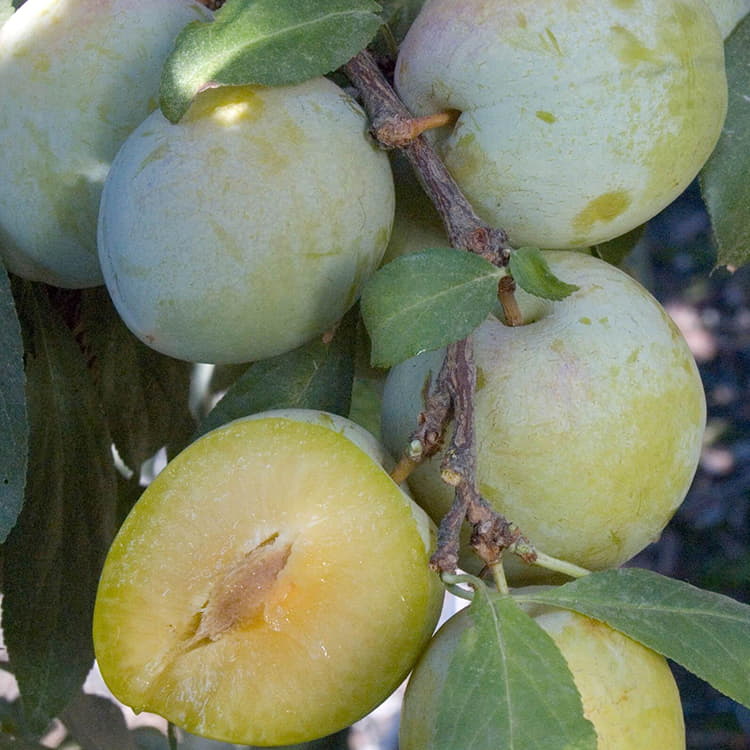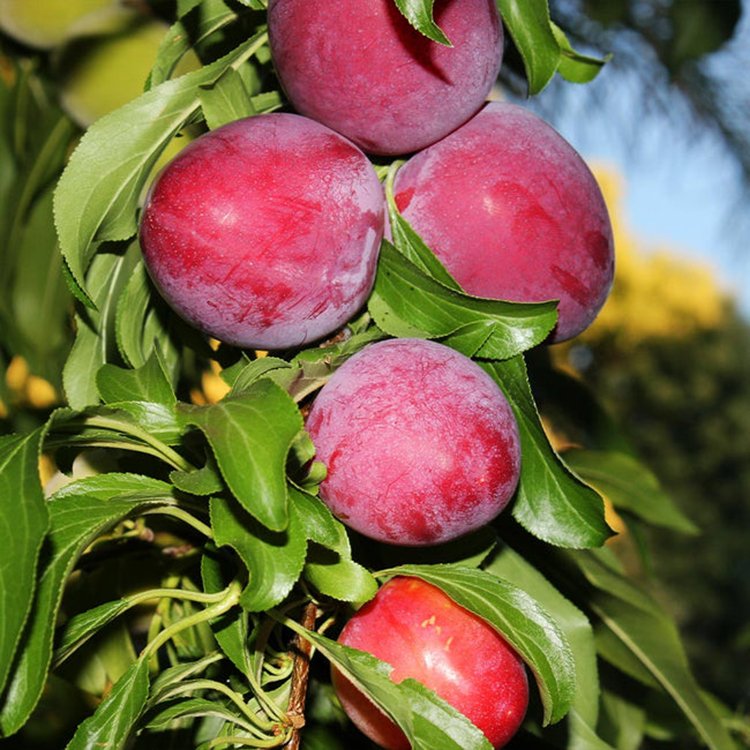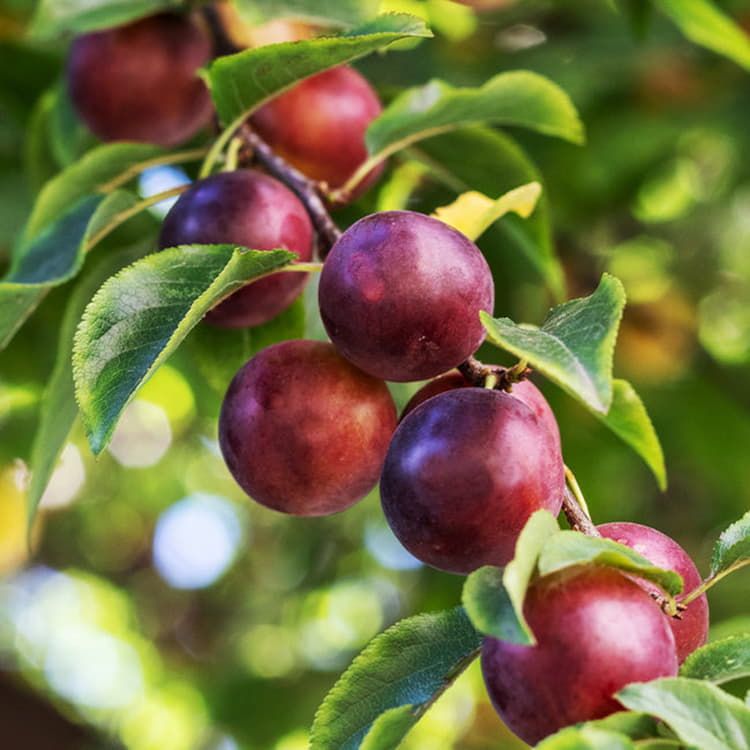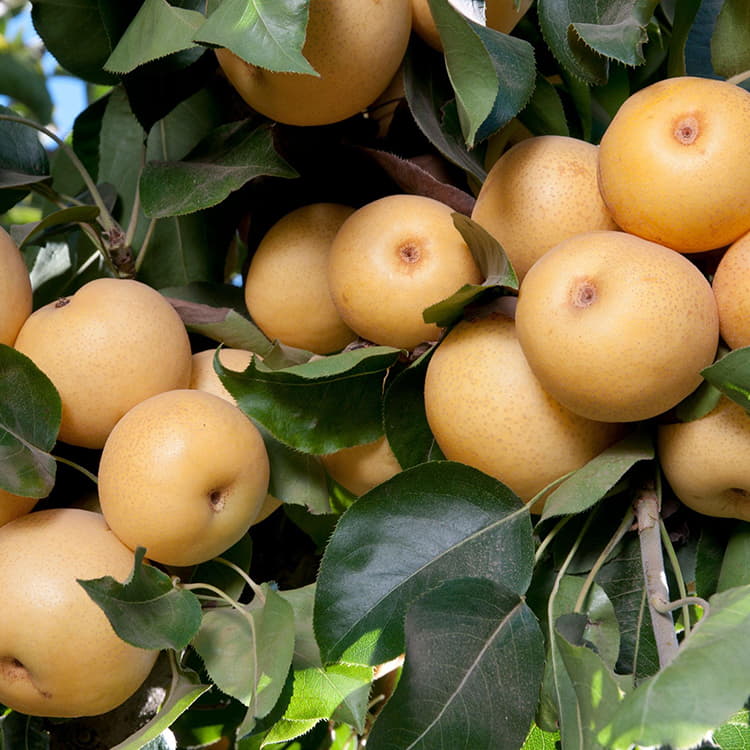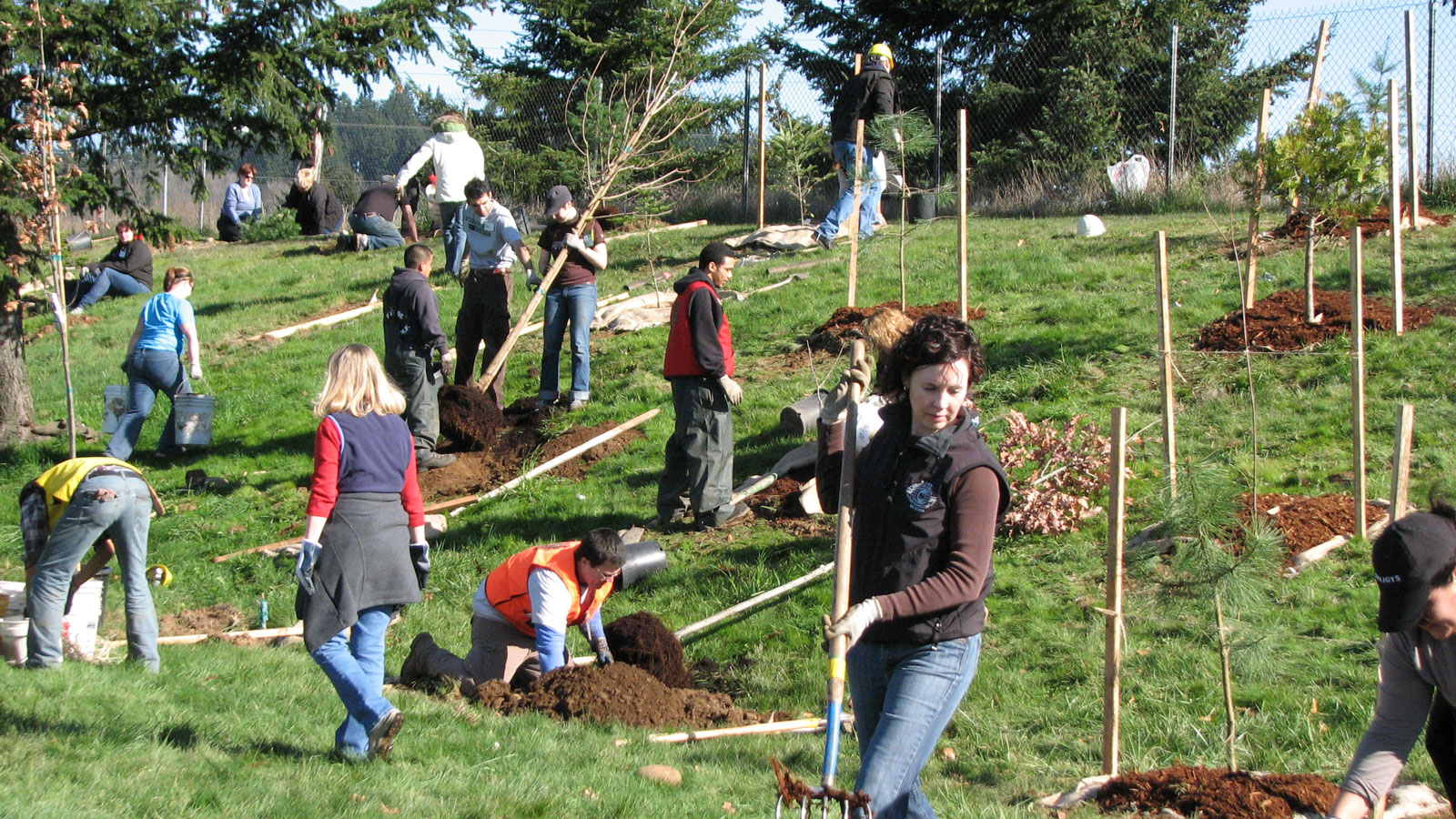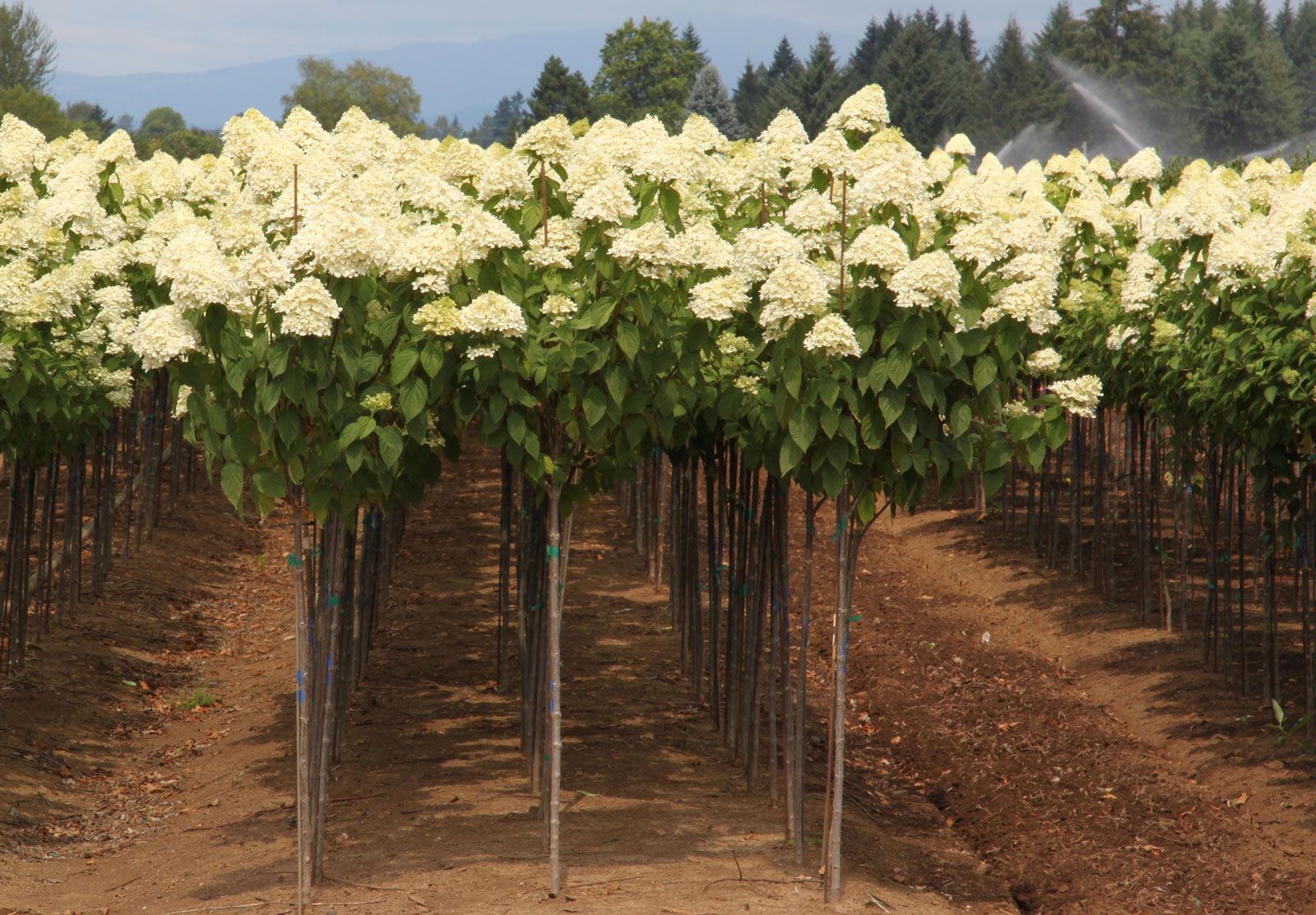Our Fruit Trees
Grow your own orchard with the best fruit trees
Rootstocks
| Tree | Rootstock |
| Apple (Malus) | M106 |
| Apricot (Prunus) | Citation or St.Julian |
| Aprium® (Prunus) | Citation |
| Asian Pear (Prunus) | OHxF 333 |
| Cherry (Prunus) | Mazzard/Mahaleb |
| Fig (Ficus) | own root |
| Nectarine (Prunus) | Lovell or St. Julian |
| Peach (Prunus) | Citation, Lovell or St. Julian "A" |
| Persimmon (Diospyros) | D. Lotus |
| Pluerry® (Prunus) | Myro 29C |
| Pluot® (Prunus) | Citation |
| Plum & Prune (Prunus) | Citation or Marianna |
| Pear (Pyrus) | Quince |
Fruit trees are the perfect answer for health-conscious gardeners who wish to eat fresh, healthy and local. After all, what can be fresher – and more local – than juicy, nutritious fruit plucked from one’s own trees? Specialty rootstocks including dwarf and semi-dwarf types assure that trees will have good disease resistance and anchorage. And they won’t overgrow the confines of an urban garden.
Our expertly budded, field-grown, bare root trees are containerized in late winter and finished to perfection in one season for your fall and/or spring garden center sales.They’re established in #7 containers, a size that’s ideal for garden center sales. Trees are small enough to be portable and affordable, and big enough to begin producing fruit soon after they are established in garden, orchard or home landscape.
Please note that local weather and growing conditions including soil types, pH, elevation, frost-free days, microclimates and other variables should be considered when choosing fruit trees for your home orchard or landscape. Climate zone recommendations for each variety are general guidelines – best used in conjunction with advice from experts at your local independent garden center, university/county extension service, master gardener organization, botanical garden or horticultural society.
Diospyros - Persimmon
Fuyu (Jiro) Persimmon
Late midseason fruits are crunchy when ripe, and non-astringent. They are of medium size and more flat than rounded in shape. This hardy tree is practically pest free and is an attractive small ornamental as well as a productive, self-fruitful tree. Requires 200 chilling hours. Zone 7-10.
Ficus - Fig
Desert King Fig (a.k.a. King)
Pale green skin hides rich, strawberry colored pulp that offers rich flavor for eating fresh. It bears a large breba crop (fruiting in spring on the previous years’ shoot growth) and a later crop that is light in hot regions and heavier in coastal climates. Prune lightly, only as needed, to preserve the breba crop of spring. Self-fruitful. Zone 5-9.
Malus - Apple
Braeburn Apple
Crisp and tangy fruits have a unique sweet/tart flavor. Firm to the touch with red and orange vertical streaks, the medium to large sized fruits hold their shape and retain their moisture during baking, making them a clear favorite for pies, cobblers and sauces. Self-fruitful, they are a top choice for late season harvest and are excellent keepers. Chilling requirement is 700 hours. Zone 5-10.
Fuji Apple
Developed in Japan and introduced to the U.S. market in 1962, this cross of Red Delicious and Virginia Ralls Genet quickly became a national favorite. Fruit is large to very large with firm, sweet, and crisp flesh. Dull reddish skin is sometimes russeted. Self-fruitful and with a chilling requirement of less than 500 hours, it offers a very long shelf life compared to other apples. Zone 6-9.
Ghost Apple
For the apple lover seeking a truly unique variety, taste pleaser is in a category by itself. With totally white skin, these white flesh apples hang on the tree like floating goblins. This heat-loving apple has a sweet sub-acid flavor. Developed by Zaiger Genetics. Patent pending. 500 hours of chilling time
Golden Delicious Apple
Crisp, aromatic flesh distinguishes this well-named old favorite that produces medium to large fruits with yellow skins and crisp, sweet flesh. Trees bear reliably and at a young age, producing abundant, mid-season crops in varied climates. Good for fresh eating or cooking, it is self-fruitful and requires 700 chilling hours. Zone 5-10.
Gravenstein Apple
These classic apples are synonymous with great applesauce and delicious pies. A traditional favorite for cooking, their crisp and juicy flesh has a tart edge that makes them a popular choice for fresh eating. Skin is yellow-green with contrasting red stripes. Early blooming and early harvest, this very cold-hardy variety requires 700 hours chilling time and a pollenizer such as Fuji, Gala or Red Delicious. Zone 2-9.
Honeycrisp Apple
Exceptionally crisp and juicy texture of this very hardy apple developed by the University of Minnesota makes it a favorite in the home orchard as well at the grocery store. Skin color is a distinctive mottled red over a yellow background. A reliable annual bearer, its fruits ripen evenly, hold well on the tree and may be harvested over an extended period. Fruit stores well in cool, dry conditions. Pollenizers include Gala, Granny Smith, McIntosh and Red Delicious. Zone 3-8.
Hudson's Golden Gem Apple
McIntosh Apple
Blooms of this popular apple bring beauty and fragrance to the garden in spring. Bright red, medium size fruit is aromatic and firm, tart and sweet, and a favorite for cooking and desserts! Fruit ripens early in the season. Chilling requirement is 900 hours. Partially self-fruitful but produces heavier crops when planted with pollenizers such as Red Delicious, Gala and other early blooming varieties. Zone 4-7.
Pink Lady® Apple
Malus ‘Cripps Pink’
A long growing season and hot weather ensures the heaviest crops from this introduction from Australia, known there as Cripps Pink. Distinguished by its crisp, sweet-tart flavor, this offspring of Lady Williams and Golden Delicious has reddish pink over green skin and firm white flesh that resists browning. It is self-fruitful and requires only 300-400 chilling hours. Zone 6-9.
Red Delicious Apple
This is the apple that put the State of Washington on the map. Fruit is crisp and juicy with bright red waxy skin. This classic apple requires a pollenizer and also serves as a good pollenizer for most other apples. Chilling requirement is 700 hours, with ripening taking place in late September to early October. Pollenizers include Fuji, Gala, Golden Delicious and Granny Smith. Zone 4-7.
Prunus - Apricot
Harcot Apricot
The sweet, juicy rich flavor of this classic apricot is hard to beat. Late midseason bloom avoids frost damage and crop loss. Medium to large fruits ripen in early midseason. Of Canadian origin, this self-fruitful, time-tested variety resists brown rot and perennial canker. Chilling requirement 700 hours. Zone 5-9.
Tilton Apricot
Firm, medium to large fruits with rich flavor recommend this widely adapted tree as one of the best apricots for home orchards and the #1 apricot for canning. Fruit is also excellent when eaten fresh or dried. Self fruitful, it performs best in Zones 5-9 and requires an estimated 600 chilling hours.
Wenatchee Moorpark Apricot
Firm, medium to large fruits with rich flavor recommend this widely adapted tree as one of the best apricots for home orchards and the #1 apricot for canning. Fruit is also excellent when eaten fresh or dried. Self fruitful, it performs best in Zones 5-9 and requires an estimated 600 chilling hours.
Prunus - Aprium®
Cot-N-Candy White Aprium®
Indescribably delicious flavor is delivered by this unique hybrid of apricot and plum. Bite into the golden orange skin of this very sweet and juicy, medium sized, white-fleshed fruit and enjoy a unique flavor burst. Developed by Zaiger Genetics, this interspecific self-fruitful tree requires 400 or fewer chilling hours below 45°F and performs best in Zone 7-10.
Prunus - Cherry
Bing Cherry
Late midseason fruits are crunchy when ripe, and non-astringent. They are of medium size and more flat than rounded in shape. This hardy tree is practically pest free and is an attractive small ornamental as well as a productive, self-fruitful tree. Requires 200 chilling hours. Zone 7-10.
Montmorency Cherry (Sour Cherry)
Large, bright red fruits with yellow flesh have sweet-tart flavor that is a delicious ingredient of cherry pie and other sweet delights. A commercial variety that produces heavy crops in the home orchard as well, it is self-fruitful and also serves as a pollenizer for sweet cherries. For best production, the chilling requirement of this extremely winter hardy cherry is a minimum of 500 hours. Zone 4-9.
Rainier Cherry
Rainier Cherries bring high prices in the grocery store and deliver great pleasure when harvested from your own trees. Large, red-blushed, yellow fruits are sweet and juicy, and are top-scorers in formal taste tests. Pollenized by Van, Lambert, Lapins, Black Tartarian and Bing, it requires an estimated 700 chilling hours and performs best in Zones 5-9.
Stella Cherry
Sweet, dark red, nearly black fruits are delicious for eating fresh and similar in flavor to its parent, Lambert. Stella is a good choice for home orchards, as it is self-fruitful and a good pollenizer for other cherries. Harvest is late season, with 400 chilling hours needed. Zone 5-9.
Utah Giant Cherry
Boasting larger, firmer more flavorful fruits than Bing or Lambert, this dark, sweet cherry is a top choice for canning and eating fresh. The favorite of Utah’s commercial orchardists, it is also a top performer for home orchardists in Utah and other high, dry climates. It requires 800 chilling hours and a pollenizer such as Bing, Van, Lambert or Rainier. Zone 4-9.
Van Cherry
Cherries are medium sized, with dark red skin and tart firm flesh. They ripen in mid July, producing an early and heavy fruit crop that resists cracking. Suggested pollenizers for this very cold hardy and reliable producer are Bing and Stella, with 700 chilling hours needed for optimum production. Zone 4-9.
Prunus - Nectarine
Fantasia Nectarine
A feast for the eye as well as for eating, the bright yellow skin of Fantasia is overlaid with approximately 75 percent red blush. Large oval fruits are freestone with smooth firm flesh and tart/sweet taste. Fruits left on the tree for later harvest are sweet and juicy with rich flavor. Early to ripen, this self-fruitful nectarine ripens midseason and requires a minimum of 500 hours chilling time. Zone 4-9.
Flavortop Nectarine
Large, showy pink blossoms are highly ornamental in early spring. These evolve into bright yellow, red-blushed freestone fruits. As its name implies, it is at the “top” of the flavor scale and a favorite for fresh eating. Trees are self-fruitful, vigorous and extremely productive, and require 500 or fewer chilling hours for best performance. Zone 5-9.
Harko Nectarine
Big, showy, bright pink flowers are a spring wakeup call for your garden and landscape. Bite through the pretty, orange-blushed yellow skin of this handsome and tasty nectarine to enjoy its sweet and juicy yellow flesh. This self-fruitful, cold hardy Canadian variety is tolerant of bacterial spot and brown rot. It requires an estimated 800 chilling hours and performs best in Zone 5-9.
Heavenly White Nectarine
Nectarine lovers consider this unique fruit to be a connoisseur’s delight. A consistently high scoring fruit in formal taste tests, it offers a superb acid/sugar balance and rich complex flavor, according to Dave Wilson Nursery literature. Red blushed, cream-colored skin covers the very large, firm, white-fleshed freestone fruits. An estimated 650 chilling hours are required for this self-fruitful variety. Zone 6-9.
Nectar Babe Nectarine
Known for its sweet and juicy flesh, this dwarf, shrub-like nectarine is celebrated for its smooth, vibrant, red-blushed orange skin and a perfect balance of tangy and sugary flavors. An abundance of fruit offers a delightful summer treat, enjoyed fresh or in various culinary creations. Bright pink flowers of early spring attract pollinators and add a delightful ornamental dimension. Zone 6-9.
Prunus - Peach
Contender Peach
Bright pink, fragrant flowers signal the advent of spring and later develop into abundant crops of large, yellow-fleshed peaches with red blushed yellow-orange skins. This vigorous grower resists bacterial spot disease and avoids frost damage by blooming later in spring than is typical of peaches. Self-fruitful, its estimated chilling requirement is 1000 hours. Zone 5-8.
Elberta Peach
This popular old freestone variety bears large, red-blushed, golden-yellow fruits with classic peach taste and aroma. Ripening late mid-season, it needs 600 chilling hours and is self-fruitful and resistant to brown rot. A bright pink crop of fragrant flowers is a springtime bonus. Zone 5-9.
Frost™ Peach
Medium to large, yellow skinned freestone peaches with a slight red blush grow in abundance on the branches of this extra-hardy and disease resistant variety. Resistant to leaf curl and very vigorous, this midseason, heavy producer is self-fruitful and needs 700 chilling hours. Zone 5-9.
Honey Babe Miniature Peach
This delightfully petite and exceptionally sweet fruit tree, known for its compact size and delectable fruit, is both ornamental and edible. Heavy bearing and freestone, it makes a perfect snack when plucked straight from the tree or added to fruit salads and desserts. Beneath its smooth, vibrant orange, red-blushed skin is juicy, tender flesh and perfect peach flavor. Bright pink flowers are an ornamental bonus and a magnet for pollinators.
Pix Zee Miniature Peach
Don’t let the small size of this tree fool you! It delivers big crops of large, firm, yellow, flavorful freestone peaches. Fruits ripen early–midseason to midseason. Orange skin is overlaid with a red blush. Chilling requirement of this self-fruitful peach is 400 hours or less. A vigorous grower as it reaches a mature height of about six feet; its compact size is perfect for container or courtyard culture. Zone 5-9.
Reliance Peach
Rely on this late blooming, very cold hardy variety to produce bountiful crops of sweet, juicy, and delicious yellow freestone fruits that are ready to harvest two to three weeks before Elberta. Thanks to its late bloom time that protects flowers from frost damage and subsequent crop loss, this is the best choice for climates with severely cold winters and springs. Self-fruitful, its estimated chilling requirement is 1000 hours below 45°F. Zone 5-8.
Veteran Peach
Medium sized golden peaches blushed with red ripen for midseason harvest. Freestone fruit is firm and juicy. One of the most reliable for cold climates, this winter hardy peach avoids frost damage by blooming later than most peaches. A good performer in the Northwest, this highly productive, self-fruitful tree reliably sets fruit with 900 chilling hours. Zone 4-9.
Prunus - Pluerry™
Sweet Treat Pluerry™
The first of its kind, this taste test favorite combines the sweetness of a cherry with the summer fresh zing of a plum. Much larger than a cherry, this interspecific hybrid of multiple fruit species is prolific and precocious, ripening midseason to produce fruits that will hang on the tree for over a month. Predominantly plum and cherry, its lineage also includes peach and apricot. Flavor King Pluot® or a plum pollenizer such as Santa Rosa or Satsuma is required. Zone 6-9. Chilling requirement is 200-300 hours.
Prunus - Pluot®
Dapple Dandy Pluot®
Sold in stores as “Dinosaur Egg®,” the large, firm fruits of this interspecific hybrid of plum and apricot offer spicy, plum-apricot flavor and a good acid to sugar balance (17 ºBrix). Its distinctive skin color is pale green to yellow with red mottling. Take a bite to discover creamy pink, delicious flesh inside. The small spreading tree is an attractive landscape ornamental and very productive. Ripening late midseason, its pollenizers include Flavor King Pluot®, and plums including Santa Rosa, Catalina and Burgundy. Zone 5-9.
Flavor King Pluot®
A favorite of farmer’s market shoppers, the uniquely sweet flavor of this unusual fruit commands attention in taste tests and is remembered. Resemblance to a classic plum is only skin deep – fragrant red and gold flesh is firm, juicy and sweet (18 ºBrix). Fruit holds well on the tree, ripening late midseason and staying firm for as long as two weeks after maturity. Pollenizers include Dapple Dandy Pluot® and Santa Rosa Plum. Zone 5-9. It has a chilling requirement of 400 or fewer hours.
Prunus - Plum
Elephant Heart Plum
Pick and enjoy this home orchard favorite straight off the tree as fruits ripen over a long period of a month or more. Large, heart-shaped fruit is sweet and juicy. Firm red flesh is covered by smooth, dark reddish-purple skin. Pollenize this hardy, heavy bearing tree with Beauty or Santa Rosa. Chilling requirement is 500 or fewer hours below 45°F. Performs best in Zone 5-9.
Emerald Beaut Plum
Enjoy great flavor for months with this plump, juicy, sweet freestone plum. Fruits ripen late in the season and continue to sweeten (while remaining crisp and crunchy) as they hold on the tree for as long as two months. Greenish yellow to orange flesh rates high in blind test fruit tastings. Pollenizers include Beauty, Burgundy, Late Santa Rosa and Nubiana Plums, and Flavor King Pluot®. 600-700 chilling hours required. Zone 6-9.
Satsuma Plum
The mild sweet flavor of this juicy plum makes it a favorite for eating fresh from the tree. Bite into its mottled maroon over green skin to discover dark red flesh and rosy juice that give beautiful color to jams and jellies made from this tasty variety. Choose Santa Rosa or Beauty plum as a pollenizer of this hardy, early mid-season plum that needs just 300 chilling hours. Zone 5-8.
Superior Plum
Superior flavor and earlier, heavier crops are benefits of planting this plum that’s a hybrid of Japanese and American varieties. Fruit is large, firm and sweet. Late bloom time prevents frost damage and subsequent crop loss. Self-fruitful and very cold hardy, this home orchard favorite performs best in Zone 4-9.
Prunus - Prune
Italian Prune
Firm flesh is sweet with some tartness, and an old-time favorite for fresh eating, canning and drying. Juicy, medium size freestone fruits have purple skins and ripen late in the season. Vigorous, cold hardy and self-fruitful, this late blooming variety avoids frost and requires 800 chilling hours. Zone 4-9.
Pyrus - Asian Pear
20th Century Asian Pear
Crispy and juicy, sweet fruits crunch like an apple but taste more like a pear. Fruits of this easy to grow, heavy bearing small tree ripen midseason and keep well. Also known as Nijisseiki or Apple Pear, it performs well in warmer climates thanks to a low chilling requirement of only 300-400 hours. Self-fruitful, it may also be pollenized by Shinseiki, Bartlett, or other pear. Zone 5-10.
Pyrus - Pear
Bartlett Pear
A variety favored by generations and arguably the world’s most popular pear, Bartlett bears medium to large fruit with green skin that ripens to a golden yellow. Tender, sweet fruit has smooth texture and flavor that make it a favorite for eating fresh. Vigorous grower bears heavily and consistently, ripening late midseason. Self-fruitful in most climates of the West, D’Anjou is a good home orchard companion if an additional pollenizer is needed. It may also be pollenized by Bosc, Winter Nelis and D’Anjou. Zone 5-9.
Sensation Red Bartlett Pear
High quality Bartlett-type fruit with attractive shiny red skin. Fruit from this relatively small tree can be harvested early for crunchy, tart flavor, or left on the tree to become sweeter and juicier as they ripen. Self-fruitful in most climates of the Western U.,S, they are elsewhere pollenized by other pears. Performs best in Zones 5-9 and requires an estimated 700 chilling hours.

